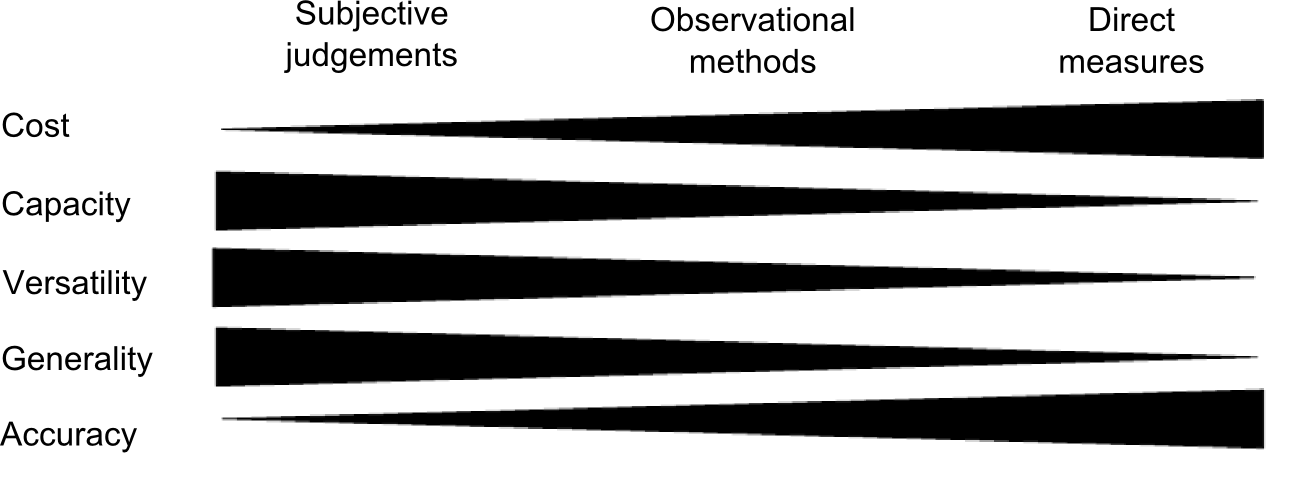Accurate and precise methods of measuring the workload exposure are important pre-requisites to establish the exposure-response relationships, as well as to correctly interpret the intervention studies. The methods based on direct measurements of mechanical exposure are considered as those that provide data with higher quality, and therefore more recommended than the observational methods or subjective judgments which only provide classified information at intervals or ordinal scales.

The subjective judgments give the possibility of studying a large number of individuals at a modest cost, being the instruments most used in epidemiological studies. In addition, through a simple instrument we can obtain information about different exposure variables. In combination, the questions can be conceived to objectify exposure in general, whereas the direct methods only cover exposure information in a certain period of records. However, self-records present a valid record and a very low reproducibility concerning the needs of ergonomic intervention, while a more accurate and precise estimation operation appears to be offered by direct measurements.
There is a reasonable number of methods to assess mechanical exposure exerted on several body segments, when workers perform a certain task, which can be associated with measures that reflect physiological responses in a particular situation. Such methods include: a dynamometry (force), electromyography (electrical activity of muscle), goniometry (joint angles and frequency of movements) and accelerometry (vibrations).